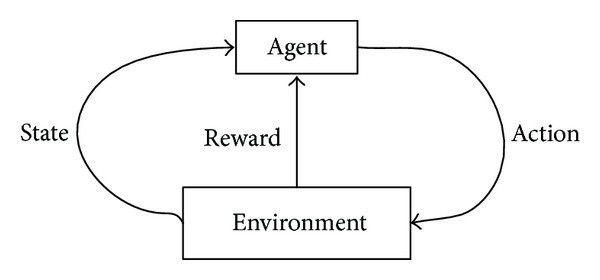本文转自雷锋网,如需转载请至雷锋网官网申请授权。
最近,一份关于那些声称在其产品和服务上使用人工智能[29] [30]的公司滥用人工智能的报告发布。根据Verge [29]的数据,40%声称使用人工智能的欧洲初创公司其实并没有使用这项技术。去年,TechTalks也意外发现了这样的滥用行为,一些公司声称使用机器学习和先进人工智能来收集和检查数千名用户的数据,以增强其产品和服务[2] [33]的用户体验。
遗憾的是,公众和媒对于什么是真正的人工智能 [44],以及到底什么是机器学习[18] ,仍然存在很多困惑。这些术语通常被用作同义词。在其他情况下,人工智能与机器学习是相对独立的、互相平行的领域发展进步,而另一些则利用这一趋势来有意炒作和博眼球(刺激),来增加销售量以及收入 [2] [31] [32] [45]。
下面我们来看看人工智能和机器学习之间的一些主要区别。
什么是机器学习?

Tom M. Mitchell,Machine Learning,McGraw Hill,1997[18]
CMU计算机科学学院临时院长、卡内基梅隆大学(Carnegie Mellon University)教授、前机器学习系主任 Tom M. Mitchell 表示:
科学领域最好由它所研究的中心问题来界定。机器学习领域试图回答以下问题:
“我们怎样才能建立一个随着经验而自动改进的计算机系统,而支配所有学习过程的基本法则是什么?[1]”
机器学习(ML)是人工智能的一个分支,正如计算机科学家和机器学习先驱 [19]Tom M.Mitchell所定义的:“机器学习是对计算机算法的研究,允许计算机程序通过经验自动改进。” [18] —ML是我们期望实现人工智能的方法之一。机器学习依赖于对大大小小的数据集进行研究,通过检查和比较数据来发现共同的模式并探索细微差别。
例如,如果您提供一个机器学习模型,其中包含许多您喜欢的歌曲,以及它们相应的音频统计数据(舞蹈性、乐器、节奏或流派)。它应该能够自动化(取决于所使用的有监督机器学习模型)并生成推荐系统 [43],以便在未来向您推荐您喜欢的音乐(以高概率),类似于Netflix、Spotify和其他公司所做的 [20] [21] [22]。
在一个简单的例子中,如果你加载了一个机器学习程序,其中有相当大的X射线图片数据集以及它们的描述(症状、需要考虑的项目和其他),它应该有能力在以后协助(或可能自动化)X射线图片的数据分析。机器学习模型会查看不同数据集中的每一张图片,并在具有可比指征标签的图片中找到共同的模式。此外,(假设我们对图像使用可能的ML算法)当你用新的图片加载模型时,它会将其参数与之前收集的例子进行比较,以揭示图片中包含它先前分析过的任何指征的可能性。

监督学习(分类/回归)|无监督学习(聚类)|Credits: Western Digital [13]
我们前面示例中的机器学习类型,称为“监督学习”,其中监督学习算法尝试对目标预测输出和输入特征之间的关系和依赖关系建模,以便我们可以根据这些关系预测新数据的输出值,它已经从以前的数据集 [15] 中学习到了反馈。
无监督学习是机器学习的另一种类别,是一类主要用于模式检测和描述性建模的机器学习算法。这些算法在数据上没有输出类别或标签(模型使用未标记的数据进行训练)。

强化学习 | Credits: Types of ML Algorithms you Should Know by David Fumo [3]
强化学习是第三种流行的机器学习类型,其目的是利用从与环境的交互中收集到的观察结果来采取行动,以最大限度地提高回报或降低风险。在这种情况下,强化学习算法(称为agent)通过迭代不断地从环境中学习。强化学习的一个很好的例子是电脑达到了超人的状态,并在电脑游戏中打败了人类[3]。
机器学习可以让人眼花缭乱,尤其是它的高级子分支,即深度学习和各种类型的神经网络。无论如何,它是 "神奇 "的(计算学习理论) [16],不管公众有时是否有观察其内部运作的问题。虽然有些人倾向于将深度学习和神经网络与人脑的工作方式进行比较,但两者之间存在着本质的区别 [2] [4] [46]。
什么是人工智能(AI)?

卡耐基梅隆大学计算机科学学院教授兼院长 Andrew Moore讲解的人工智能全景图|Youtube [14]
另一方面,人工智能的范围很广。根据卡耐基梅隆大学计算机科学学院前院长Andrew Moore [6] [36] [47]的说法,"人工智能是一门科学和工程,它让计算机以一种直到最近我们还认为需要人类智能的方式运行。"
这是一个用一句话来定义人工智能的好方法;然而,它仍然显示出这个领域是多么广泛和模糊。50年前,下棋程序被认为是人工智能的一种形式 [34],因为博弈论和游戏策略是只有人脑才能完成的能力。如今,象棋游戏是枯燥而陈旧的,因为它几乎是每个计算机操作系统(OS)的一部分 [35];因此,"直到最近 "是随着时间的推移而发展的东西 [36]。
CMU的助理教授和研究员 Zachary Lipton在Approximately Correct [7]上阐明,AI这个术语 "是一个理想的,是一个动态的目标,一种基于那些人类拥有但机器没有的能力"。AI还包括相当程度的我们所知道的技术进步。机器学习只是其中之一。之前的人工智能作品利用了不同的技术。例如,1997年击败世界国际象棋冠军的人工智能 "深蓝 "使用了一种叫做树搜索算法 [8]的方法来评估每一个回合的数百万步 [2] [37] [52] [53]。
使用深度优先搜索解决八皇后难题的示例 | 人工智能简介 | . how2Examples
正如我们今天所知道的那样,人工智能的象征是以Google Home、Siri和Alexa为代表的人机交互小工具,以Netflix、亚马逊和YouTube为代表的机器学习驱动的视频推荐系统。这些技术进步正逐步成为我们日常生活中不可或缺的一部分。它们是智能助手,提升了我们作为人类和专业人士的能力--使我们更有效率。
与机器学习相比,人工智能是一个动态的目标 [51],它的定义会随着其相关技术进步的进一步发展而改变[7]。可能在几十年内,今天的人工智能创新进展应该被认为是乏味的,就像现在的翻盖手机对我们来说一样。
为什么科技公司倾向于将AI和ML交替使用?

"... ...我们想要的是一台能从经验中学习的机器" ~ Alan Turing
"人工智能 "一词是在1956年由Allen Newell和Herbert A. Simon等一批研究人员提出的[9]。从那时起,人工智能的产业经历了许多波动。在早期的几十年里,围绕着这个行业进行了大量的炒作,许多科学家都一致认为人类水平的人工智能指日可待。然而,未兑现的论断引起了行业与公众的普遍不满,并导致了人工智能的寒潮,这一时期,对该领域的资金和兴趣大大消退 [2] [38] [39] [48]。
后来,各组织试图将自己的工作与人工智能这个术语分开,人工智能已经成为无事实根据的炒作的同义词,并利用不同的名称来指代他们的工作。例如,IBM将 "深蓝 "描述为一台超级计算机,并明确表示它没有使用人工智能 [10],而它却使用了人工智能 [23]。
在此期间,各种其他术语,如大数据、预测分析和机器学习,开始受到关注和普及[40]。2012年,机器学习、深度学习和神经网络取得了长足的进步,并在越来越多的领域得到应用。各机构突然开始使用“机器学习”和“深度学习”来宣传他们的产品[41]。
深度学习开始解决那些基于经典规则编程无法完成的任务。早期的语音和人脸识别、图像分类、自然语言处理等领域突飞猛进 [2] [24] [49],2019年3月,三位最受认可的深度学习先驱获得了图灵奖,他们的贡献和突破使深度神经网络成为当今计算的关键组成部分[42]。
因此,从这个势头来看,我们看到了人工智能的回归。对于那些习惯于使用各种限制的老式软件人来说,深度学习的效果几乎就像 "魔法" [16] 一样[16]。尤其是由于神经网络和深度学习进入的一小部分领域被认为是计算机的禁区,而如今,机器学习和深度学习的工程师都能获得高薪,甚至在非营利组织工作,这就足以说明了这个领域的热度 [50] [11].。

来源 | 推特 | GPT-2更好的语言模型及其含义,Open AI
可悲的是,这一点媒体公司往往在没有进行深刻考察的情况下就进行报道,并且经常配合人工智能文章中的水晶球(译者注:神奇的事情)和其他超自然描描述。这样的欺骗性行为有助于那些公司围绕他们的产品产生炒作[27]。然而,在以后的日子里,由于未能达到预期,这些机构不得不雇佣他人来弥补他们所谓的人工智能[12]。最终,他们可能会为了短期利益而导致该领域的不信任,并引发另一个人工智能的冬天寒潮[2] [28]。
资源
机器学习导论|Matt Gormley|卡耐基梅隆大学计算机科学学院|
| http://www.cs.cmu.edu/~mgormley/courses/10601/
AI for Everyone | Andrew Ng | Coursera |
| https://www.coursera.org/learn/ai-for-everyone
Machine Learning Crash Course | Google |
| https://developers.google.com/machine-learning/crash-course/
机器学习介绍 | Udacity |
| https://www.udacity.com/course/intro-to-machine-learning–ud120
机器学习培训|亚马逊网络服务|
| https://aws.amazon.com/training/learning-paths/machine-learning/
机器学习简介|Coursera|
| https://www.coursera.org/learn/machine-learning
参考文献:
[1] The Discipline of Machine learning | Tom M. Mitchell | http://www.cs.cmu.edu/~tom/pubs/MachineLearning.pdf
[2] Why the difference between AI and machine learning matters | Ben Dickson | TechTalks | https://bdtechtalks.com/2018/10/08/artificial-intelligence-vs-machine-learning/
[3] Types of Machine Learning Algorithms You Should Know | David Fumo | Towards Data Science | https://towardsdatascience.com/types-of-machine-learning-algorithms-you-should-know-953a08248861
[4] Watch our AI system play against five of the world’s top Dota 2 Professionals | Open AI | https://openai.com/five/
[5] Differences between Neural Networks and Deep Learning | Quora | https://www.quora.com/What-is-the-difference-between-Neural-Networks-and-Deep-Learning
[6] What Machine Learning Can and Cannot Do | WSJ | https://blogs.wsj.com/cio/2018/07/27/what-machine-learning-can-and-cannot-do/
[7] Carnegie Mellon Dean of Computer Science on the Future of AI | Forbes | https://www.forbes.com/sites/peterhigh/2017/10/30/carnegie-mellon-dean-of-computer-science-on-the-future-of-ai
[8] From AI to Ml to AI: On Swirling Nomenclature & Slurried Thought | Zachary C. Lipton | Approximately Correct | http://approximatelycorrect.com/2018/06/05/ai-ml-ai-swirling-nomenclature-slurried-thought/
[9] Tree Search Algorithms | Introduction to AI | http://how2examples.com/artificial-intelligence/tree-search
[10] Reinventing Education Based on Data and What Works, Since 1955 | Carnegie Mellon University | https://www.cmu.edu/simon/what-is-simon/history.html
[11] Does Deep-Blue use AI? | Richard E. Korf | University of California | https://www.aaai.org/Papers/Workshops/1997/WS-97-04/WS97-04-001.pdf
[12] Artificial Intelligence: Salaries Heading Skyward | Stacy Stanford | Machine Learning Memoirs | https://medium.com/mlmemoirs/artificial-intelligence-salaries-heading-skyward-e41b2a7bba7d
[13] The rise of ‘pseudo-AI’: how tech firms quietly use humans to do bots’ work | The Guardian | https://www.theguardian.com/technology/2018/jul/06/artificial-intelligence-ai-humans-bots-tech-companies
[14] Simplify Machine Learning Pipeline Analysis with Object Storage | Western Digital | https://blog.westerndigital.com/machine-learning-pipeline-object-storage/
[15] Dr. Andrew Moore Opening Keynote | Artificial Intelligence and Global Security Initiative | https://youtu.be/r-zXI-DltT8
[16] The 50 Best Public Datasets for Machine Learning | Stacy Stanford | https://medium.com/datadriveninvestor/the-50-best-public-datasets-for-machine-learning-d80e9f030279
[17] Computational Learning Theory | ACL | http://www.learningtheory.org/
[18] Machine Learning Definition | Tom M. Mitchell| McGraw-Hill Science/Engineering/Math; (March 1, 1997), Page 1 | http://www.cs.cmu.edu/afs/cs.cmu.edu/user/mitchell/ftp/mlbook.html
[19] For pioneering contributions and leadership in the methods and applications of machine learning. | “Prof. Tom M. Mitchell.” National Academy of Engineering. Retrieved October 2, 2011.
[20] Recommender System | Wikipedia | https://en.wikipedia.org/wiki/Recommender_system
[21] Spotify’s “This Is” playlists: the ultimate song analysis for 50 mainstream artists | James Le | https://towardsdatascience.com/spotifys-this-is-playlists-the-ultimate-song-analysis-for-50-mainstream-artists-c569e41f8118
[22] How recommender systems make their suggestions | Bibblio | https://medium.com/the-graph/how-recommender-systems-make-their-suggestions-da6658029b76
[23] Deep Blue | Science Direct Assets | https://www.sciencedirect.com/science/article/pii/S0004370201001291
[24] 4 great leaps machine learning made in 2015 | Sergar Yegulalp | https://www.infoworld.com/article/3017250/4-great-leaps-machine-learning-made-in-2015.html
[25] Limitations of Deep Learning in AI Research | Roberto Iriondo | Towards Data Science | https://towardsdatascience.com/limitations-of-deep-learning-in-ai-research-5eed166a4205
[26] Forty percent of ‘AI startups’ in Europe don’t use AI, claims report | The Verge | https://www.theverge.com/2019/3/5/18251326/ai-startups-europe-fake-40-percent-mmc-report
[27] This smart toothbrush claims to have its very own ‘embedded AI’ | The Verge | https://www.theverge.com/circuitbreaker/2017/1/4/14164206/smart-toothbrush-ara-ai-kolibree
[28] The Coming AI Autumn | Jeffrey P. Bigham | http://jeffreybigham.com/blog/2019/the-coming-ai-autumnn.html
[29] Forty percent of ‘AI startups’ in Europe don’t use AI, claims report | The Verge | https://www.theverge.com/2019/3/5/18251326/ai-startups-europe-fake-40-percent-mmc-report
[30] The State of AI: Divergence | MMC Ventures | https://www.mmcventures.com/wp-content/uploads/2019/02/The-State-of-AI-2019-Divergence.pdf
[31] Top Sales & Marketing Priorities for 2019: AI and Big Data, Revealed by Survey of 600+ Sales Professionals | Business Wire | https://www.businesswire.com/news/home/20190129005560/en/Top-Sales-Marketing-Priorities-2019-AI-Big
[32] Artificial Intelligence Beats the Hype With Stunning Growth | Forbes | https://www.forbes.com/sites/jonmarkman/2019/02/26/artificial-intelligence-beats-the-hype-with-stunning-growth/#4e8507391f15
[33] Misuse of AI can destroy customer loyalty: here’s how to get it right | Compare the Cloud | https://www.comparethecloud.net/articles/misuse-of-ai-can-destroy-customer-loyalty-heres-how-to-get-it-right/
[34] Timeline of Artificial Intelligence | Wikipedia | https://en.wikipedia.org/wiki/Timeline_of_artificial_intelligence#1950s
[35] Computer Chess | Wikipedia | https://en.wikipedia.org/wiki/Computer_chess
[36] Artificial Intelligence at Carnegie Mellon University |Machine Learning Department at Carnegie Mellon University | https://www.youtube.com/watch?v=HH-FPH0vpVE
[37] Search Control Methods in Deep Blue | Semantic Scholar | https://pdfs.semanticscholar.org/211d/7268093b4dfce8201e8da321201c6cd349ef.pdf
[38] Is Winter Coming? | University of California, Berkeley | https://pha.berkeley.edu/2018/12/01/is-winter-coming-artificial-intelligence-in-healthcare/
[39] AI Winter | Wikipedia | https://en.wikipedia.org/wiki/AI_winter
[40] A Very Short History of Data Science | Forbes |


































